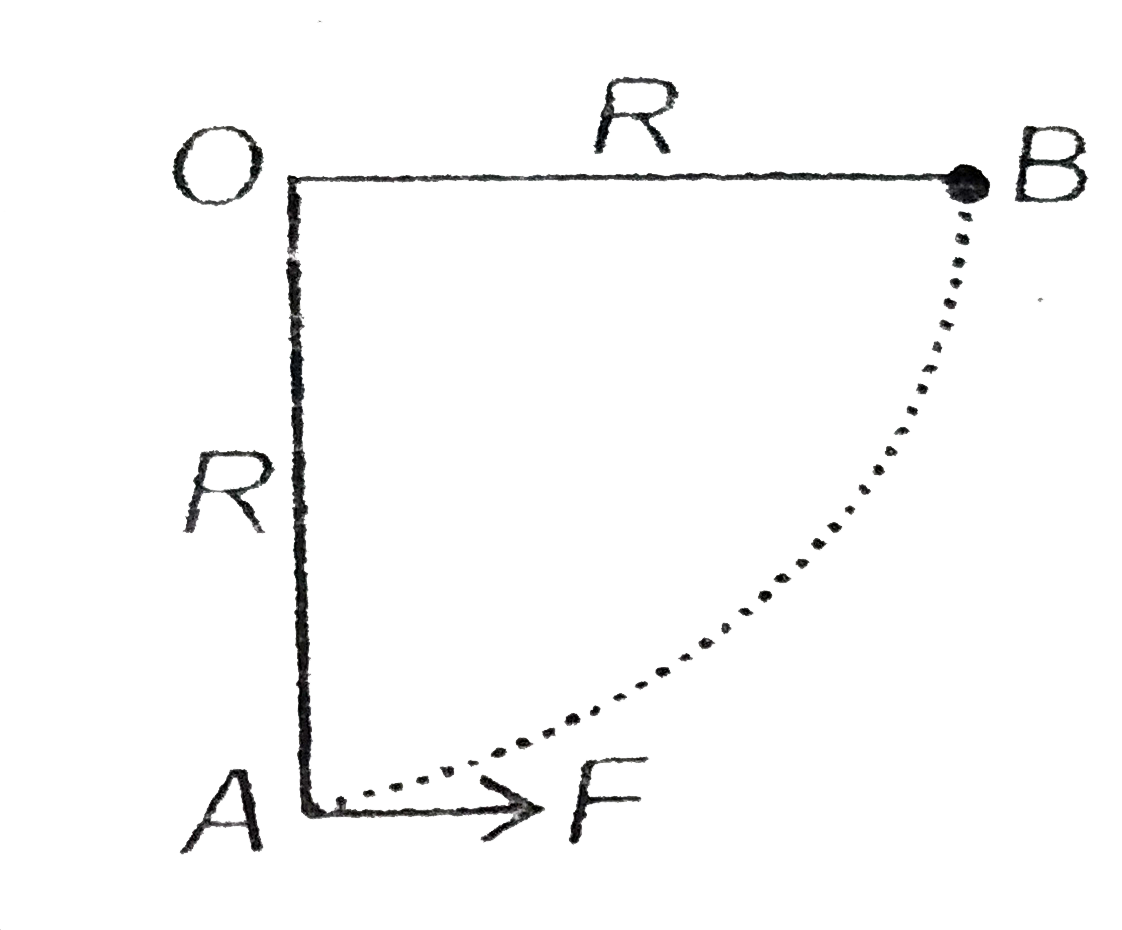The K.E. acquired by a mass m in travelling a certain distance d, starting from rest, under the action of a constant force is directly propotional to
Directly proportional to √m
Directly proportional to m
Directly proportional to 1m
None of these
The correct Answer is:D
To solve the problem, we need to analyze the relationship between the kinetic energy (K.E.) acquired by a mass m traveling a distance d under the influence of a constant force. We'll derive the expression step by step.
Step 1: Understand the scenario
A mass m starts from rest and is acted upon by a constant force F. The initial velocity u=0.
Step 2: Use the equations of motion
According to the equations of motion, the final velocity v of the mass after traveling a distance d under constant acceleration a can be expressed as:
v2=u2+2ad
Since u=0, this simplifies to:
v2=2ad
Step 3: Relate acceleration to force
The acceleration a can be expressed in terms of the force F and mass m using Newton's second law:
a=Fm
Substituting this into the equation for v2:
v2=2(Fm)d
Step 4: Express kinetic energy
The kinetic energy K.E. acquired by the mass is given by:
K.E.=12mv2
Substituting the expression for v2 from the previous step:
K.E.=12m(2Fmd)
This simplifies to:
K.E.=Fd
Step 5: Analyze the relationship
From the derived expression K.E.=Fd, we can see that the kinetic energy acquired by the mass is directly proportional to the force F and the distance d traveled.
Conclusion
Thus, the kinetic energy acquired by a mass m in traveling a distance d under the action of a constant force is directly proportional to the work done, which is Fd.
Final Answer
The kinetic energy acquired by a mass m in traveling a certain distance d, starting from rest, under the action of a constant force is directly proportional to Fd.
---
A mass m starts from rest and is acted upon by a constant force F. The initial velocity u=0.
According to the equations of motion, the final velocity v of the mass after traveling a distance d under constant acceleration a can be expressed as:
v2=u2+2ad
Since u=0, this simplifies to:
v2=2ad
The acceleration a can be expressed in terms of the force F and mass m using Newton's second law:
a=Fm
Substituting this into the equation for v2:
v2=2(Fm)d
The kinetic energy K.E. acquired by the mass is given by:
K.E.=12mv2
Substituting the expression for v2 from the previous step:
K.E.=12m(2Fmd)
This simplifies to:
K.E.=Fd
From the derived expression K.E.=Fd, we can see that the kinetic energy acquired by the mass is directly proportional to the force F and the distance d traveled.
Thus, the kinetic energy acquired by a mass m in traveling a distance d under the action of a constant force is directly proportional to the work done, which is Fd.
The kinetic energy acquired by a mass m in traveling a certain distance d, starting from rest, under the action of a constant force is directly proportional to Fd.
Topper's Solved these Questions
- WORK, ENERGY AND POWERBOOK - AAKASH INSTITUTE ENGLISHCHAPTER - WORK, ENERGY AND POWEREXERCISE - Assignment (SECTION - B)
35 Videos
- WORK, ENERGY AND POWERBOOK - AAKASH INSTITUTE ENGLISHCHAPTER - WORK, ENERGY AND POWEREXERCISE - Assignment (SECTION - C)
80 Videos
- WORK, ENERGY AND POWERBOOK - AAKASH INSTITUTE ENGLISHCHAPTER - WORK, ENERGY AND POWEREXERCISE - EXERCISE
37 Videos
- WAVESBOOK - AAKASH INSTITUTE ENGLISHCHAPTER - WAVESEXERCISE - ASSIGNMENT ( SECTION-D ( Assertion - Reason Type Questions ))
12 Videos
Similar Questions
The KE acquired by a mass m in travelling a certain distance s, starting from rest, under the action of a constant force is directly proportional to :
View SolutionThe velocity acquired by a mass m in travelling a certain distance d starting from rest under the action of a constant force is directly proportional to :-
View Solution
Knowledge Check
The kinetic energy acquired by a mass m after travelling a fixed distance from rest under the action of constant force is
Adirectly proportional √mBinversely proportional to √mCdirectly proportional to m.Dindependent of m.
The kinetic energy acquired by a mass m travelling a certain distance d, starting from rest, under the action of a force F such that the force F is directly proportional to t is
View SolutionA block of mass m is taken from A to B under the action of a constant force F. Work done by this force is

View SolutionA particle of mass m moves from rest under the action of a constant force F which acts for two seconds. The maximum power attained is
View SolutionA uniform square plate of mass m and edge a initially at rest startas rotating about one of the edge under the action of a constant torque τ. Then at the end of the 5th sec after start
View SolutionEngine of car of mass m supplies a constant power P. Starting from rest at an instant of time, then
View SolutionA cart loaded with sand having total mass m0=1800kg moves on a straight horizontal road starting from rest under the action of a force of 120N. The sand spills through a small hole hole in the bottom at a rate of 0.5 kg/sec. What will be the velocity of cart after 20 min?
View SolutionA constant force acts on a mass m at rest. Velocity acquired in travelling a fixed distance is directly proportional to :
View Solution
